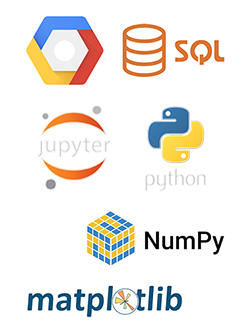
BRENT MARTIN
Data Scientist/ Business Intelligence Analyst / UI/UX Designer

Data Scientist/ Business Intelligence Analyst / UI/UX Designer
Navigate to Explore Project Pages, View Visualizations and Dashboards, and Open Jupyter Notebooks:


PROJECT GLOSSARY:
COMING SOON – follow links to read informative blog posts:

The line chart compares the portfolio’s value to the S&P 500 over time, using a strategy driven by technical indicators like MACD and Bollinger Bands. The yellow shading on the chart highlights the periods during which the strategy was actively holding positions. The model achieved an 89% win rate and 58% accuracy in predicting market direction on a day-to-day basis. While its overall performance was only slightly above a traditional buy-and-hold approach, the strategy is particularly effective in identifying optimal entry points and providing timely exit points. This would be especially useful in situations where liquidation of holdings is necessary, such as during periods of market volatility.
The Profit/Loss (P/L) chart visualizes the outcome of each trade, with green bars representing profitable trades and red bars indicating losses. The model’s performance resulted in a high percentage of winning trades (57 out of 64), highlighting its ability to capture favorable opportunities. However, several significant losses stand out, showing the potential risks involved. While the overall strategy outperforms buy-and-hold in certain scenarios, it is particularly valuable for identifying exits during volatile market periods, where liquidating holdings might be necessary. This makes the strategy practical for dynamic risk management rather than strictly outperforming a long-term investment approach.
The directionality of the S&P 500 market was predicted on a day-to-day basis using a machine learning model. A random forest classifier was trained to predict whether the market would go up or down on the following day. By using key indicators like historical close prices, volume, and rolling averages, the model achieved a precision score of approximately 58%. The predict-probability method with a confidence threshold of 60% was used to improve the accuracy of predictions, particularly focusing on high-confidence trades. Though the model performed slightly above random guessing, it was most effective in identifying strong trends and providing valuable exit signals, especially during periods where liquidation of holdings was necessary.
This project centers around predicting stock market movements using machine learning models, focusing on both the S&P 500 and FAANG stocks (Facebook, Amazon, Apple, Netflix, Google). By leveraging historical stock price data and financial indicators, the project aims to forecast market direction on a day-to-day basis and provide insights for trade entries and exits.
One segment of the project applies a random forest classifier to the S&P 500, predicting market direction with a precision score of 57%. The model uses key predictors such as historical closing prices, volume, and rolling averages to achieve this accuracy. Though this may not outperform a traditional buy-and-hold strategy, it provides valuable signals for traders seeking effective market exit points during periods requiring liquidation of holdings. Holding periods are visually highlighted in the dashboard, allowing for a clear representation of trade durations.
Additionally, the project applies similar machine learning techniques to FAANG stocks. The models predict stock prices for these high-profile companies, providing both short-term and long-term outlooks. By analyzing these stocks’ performance, the project seeks to capture trends that could inform future trading strategies, offering a predictive lens into some of the most influential companies in the market.
Client : N/A (Personal Project)
Date : September 2024
Category : Financial
Data Scientist/ Business Intelligence Analyst / UI/UX Designer